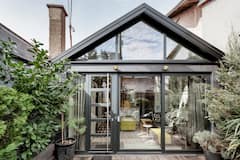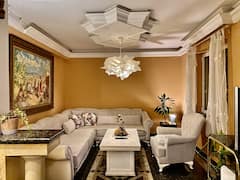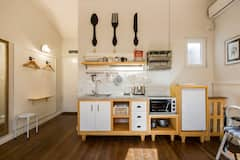Few cities in Europe and the world have been subjected to continuous and far-reaching historical influences since their foundation as the Serbian capital city had. Being a strategic key point to uncountable conquests and migrations throughout history, Belgrade was inhabited by the Celts, the Romans, the Hungarians, the Byzantines, the Turks, etc. It was also “visited” by the Huns, the Mongols, the crusaders, and others. The Serbian capital nowadays is famous for its entertaining side, featuring a myriad of cafes, clubs, splavs (café restaurants on the boats docked along the riverside), sports and many other opportunities.
Touristic Belgrade

In a touristic manner of speaking, Belgrade can be divided into two main zones – the city’s centre and everything outside. While you can find top tourist attractions, plentiful cafes, restaurants and shops in the city’s core, sports, activities in nature and interesting excursions are to be found outside. Situated at the confluence of the rivers Danube and Sava, Belgrade offers river cruises and breaks on its numerous splavs, where it is possible to have a drink or a meal. Bicycle and roller paths are available along the riverside. Feeding sociable swans, ducks and pigeons is allowed ;-).
Belgrade for the first time visitors

The centre of Belgrade, which stretches roughly from the Slavija square to Kalemegdan fortress, is where you can find official buildings (some of which could be visited through a guided tour), various shops, street cafes, monuments to distinguished historical personalities, etc. First time travellers, in general, are mostly attached to Old Belgrade. Most points of interest to the tourists are located along Knez Mihajlova (Duke Michael) and Kralja Milana (King Milan) streets. If you opt for an excursion, the organized transport mostly departs from the plateau in front of the National Parliament (the upper photo).
Best way to quickly familiarize yourselves with the tourist areas and landmarks of Belgrade is to hop on the open top bus tour, organized by the Tourist Organization of Belgrade, which operates from May to September. Full price is approximately 5 EUR. Even if you aren’t at the Serbian capital during that time, it’s fine. Two days are more than enough to explore on your own, even without the tour, and most people are willing to help you with the directions. Except perhaps the older population (60 years and above), everybody speaks English.
Most impressive landmarks of the old town are St. Sava’s Temple in the vicinity of the Slavija square – the largest orthodox temple of the Balkan region (encompassing Serbia, Greece, Bulgaria, Macedonia, Croatia, etc.), above-mentioned National Parliament, Old and New Royal Palaces, and Kalemegdan fortress. You would hardly need the public transport because the distance could easily be covered on foot in an hour. That is, if you don’t stop in stores, restaurants, or any other facility.
The National Museum and National Theatre are located at the Republic square. While National Museum is presently under reconstruction (it’s expected to be open in summer 2016), you can enjoy worldwide famous shows and operas in the theatre.
Kalemegdan fortress

Belgrade happened to be in the very centre of numerous battles and conflicts in its history, which left few traces of its former architectural legacy. One such exception is Kalemegdan fortress. Its name derives from the Turkish term meaning Field Fortress (Kale – fortress, megdan – field). Uncountable armies clashed at the base of its walls, which were, in accordance with the city, razed and rebuilt over and over again.
This formidable fortress dominates the rivers’ confluence. It offers splendid panoramic views of New Belgrade (established after the Second World War), Great War Island (a nature reserve) and distant Zemun, former suburb that practically merged with Belgrade. At Kalemegdan, you can always enjoy an open-air exhibition, its awe inspiring fortifications, a couple of museums, the zoo, striking monuments and beautiful nature. This marvellous fortification can be toured absolutely free.
The Military Museum is the greatest lure for the tourists, covering the entire history of warfare throughout Balkan. Additional points of interest are the Victor Monument (a symbol of Belgrade), Roman Well, Clock Tower, Damad Ali Pasha’s Turbe (tomb), planetarium, Gallery of Natural History, and more.
You might be interested in these Airbnbs!
Shopping and dining

The centre of Belgrade features uncountable cafes and restaurants. Most sitting places are mostly occupied regardless of time of day or night, but you won’t have trouble in finding your favourite spot.
Prices for drinks range between euro and a half (coffee) and couple of Euros (cocktails). Refreshing drinks (Coca cola, Sprite and alike) and beer are generally between 1.50 EUR (1.60 USD) and 2 EUR (2.10 USD). For a good meal for two you should plan around 20 EUR (210 USD). Don’t miss traditional Serbian specialities pljeskavica and cevapi (tschevaps). These delicious dishes, made of flavoured minced meat, are served with onion and french fries. Best drink to go with those is Coca cola. For the best dining experience in a pleasant setting, head to Skadarska street, minutes away from the Republic square.
Along Knez Mihailova street, you can find various well-known department stores, as well as handmade products such as soaps, boxes for glasses, dream catchers, jewels, souvenirs and so on. Head to Beoizlog (Knez Mihailova) and Kalemegdan for a premium shopping experience.
What else to see and do in Belgrade

If you have some additional hours you don’t know how to spend, these are some excellent suggestions:
*Visit the royal complex at Dedinje (in the photo); regular visits are organized from April to October. Bookings in advance are mandatory at the website. *Visit Avala Mountain; go up on the Avala Tower and witness breathtaking views over Belgrade and its surroundings; visit a memorial to an unknown soldier of the First World War. *To enjoy ground and water sports, and savour the natural surroundings, head to Ada Ciganlija, Belgrade’s popular picnic and natural resort. *Kosutnjak (kosuta = hind) is another wooded resort, with hiking paths, an open-air and closed swimming pools and the occasional sport courts.
General information
Weather in Belgrade is mostly pleasant, with the average daily temperatures between 10°C and 25°C most of the year. Winters, in general, aren’t especially cold, with temperatures mostly around 0°C. Summers tend to be pretty hot, with daily temperature rising up to 40°C.
The official currency in Belgrade and Serbia is Dinar (RSD). Banknote denominations are 10, 20, 50, 100, 200, 500, 1000, 2000 and 5000 RSD, while coin denominations are 1, 2, 5, 10 and 20 RSD. Approximate exchange rates are: 1 EUR = 120 RSD, 1 USD = 111 RSD.
Belgrade disposes of diverse hotels and hostels in the centre and its vicinity.
History
Get Trip101 in your inbox
Unsubscribe in one click. See our Privacy Policy for more information on how we use your data






















Create an account to